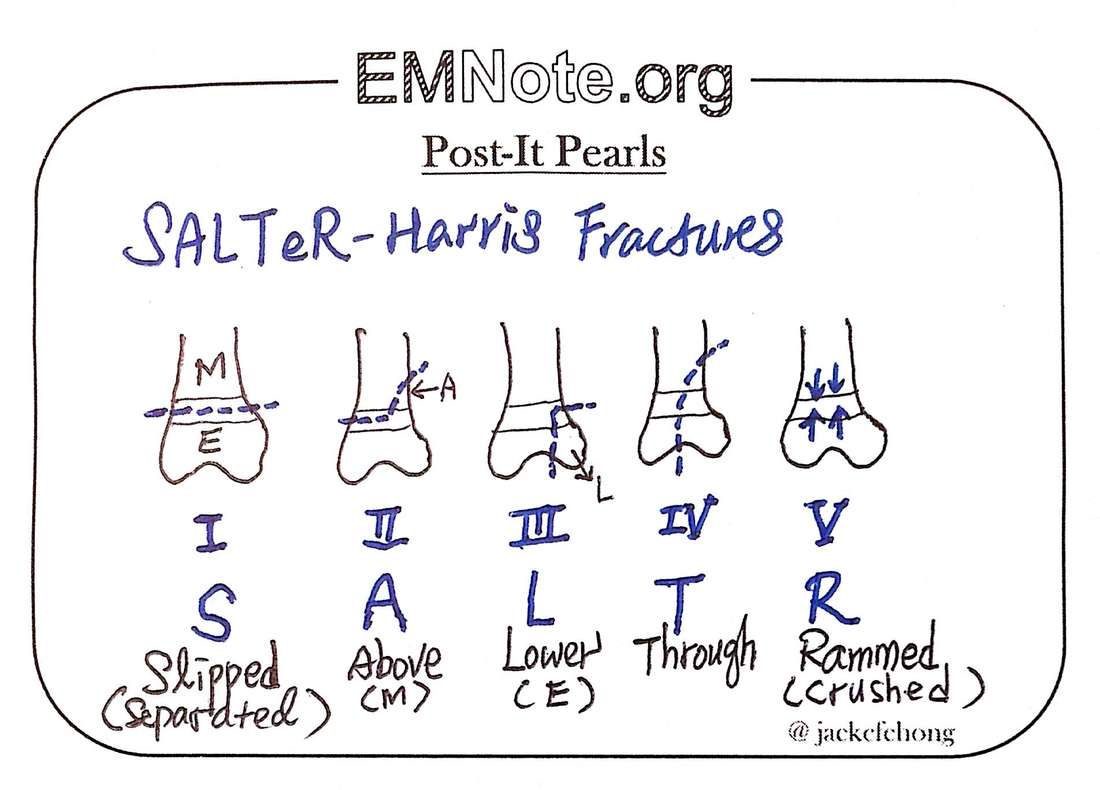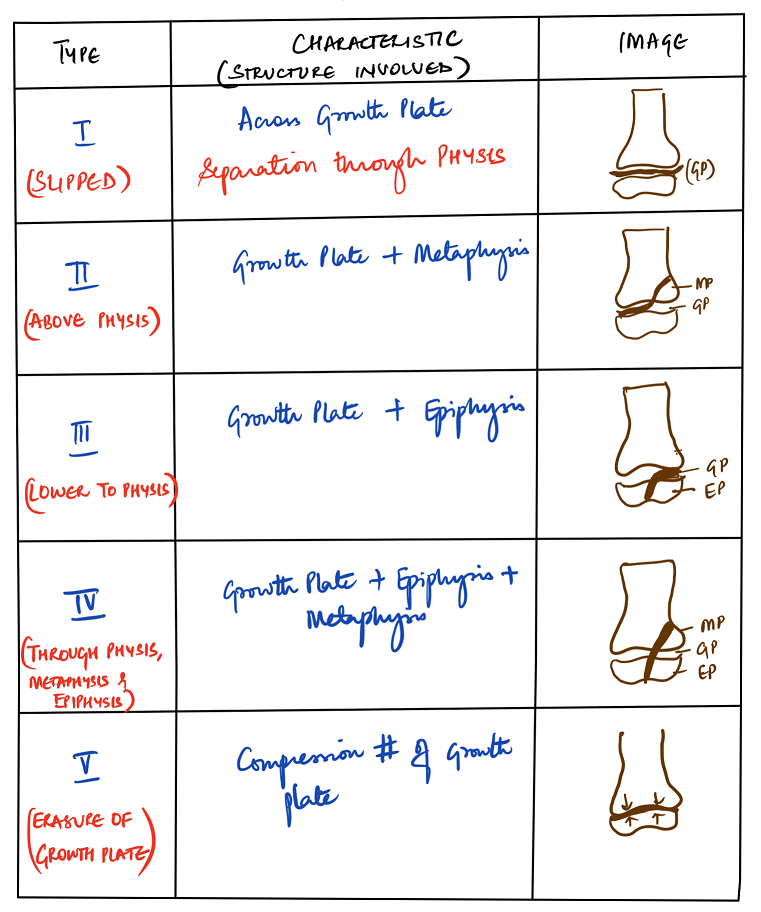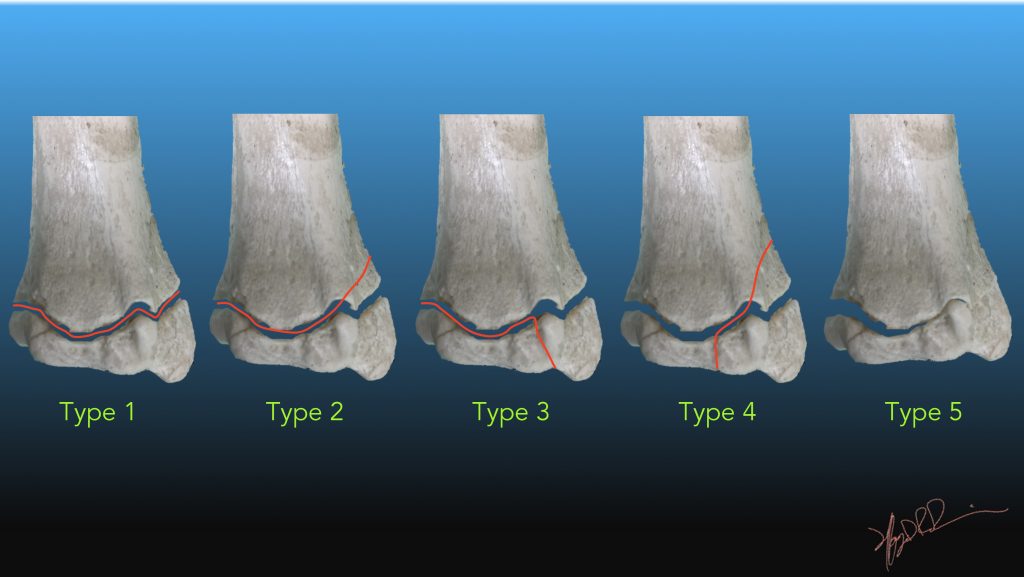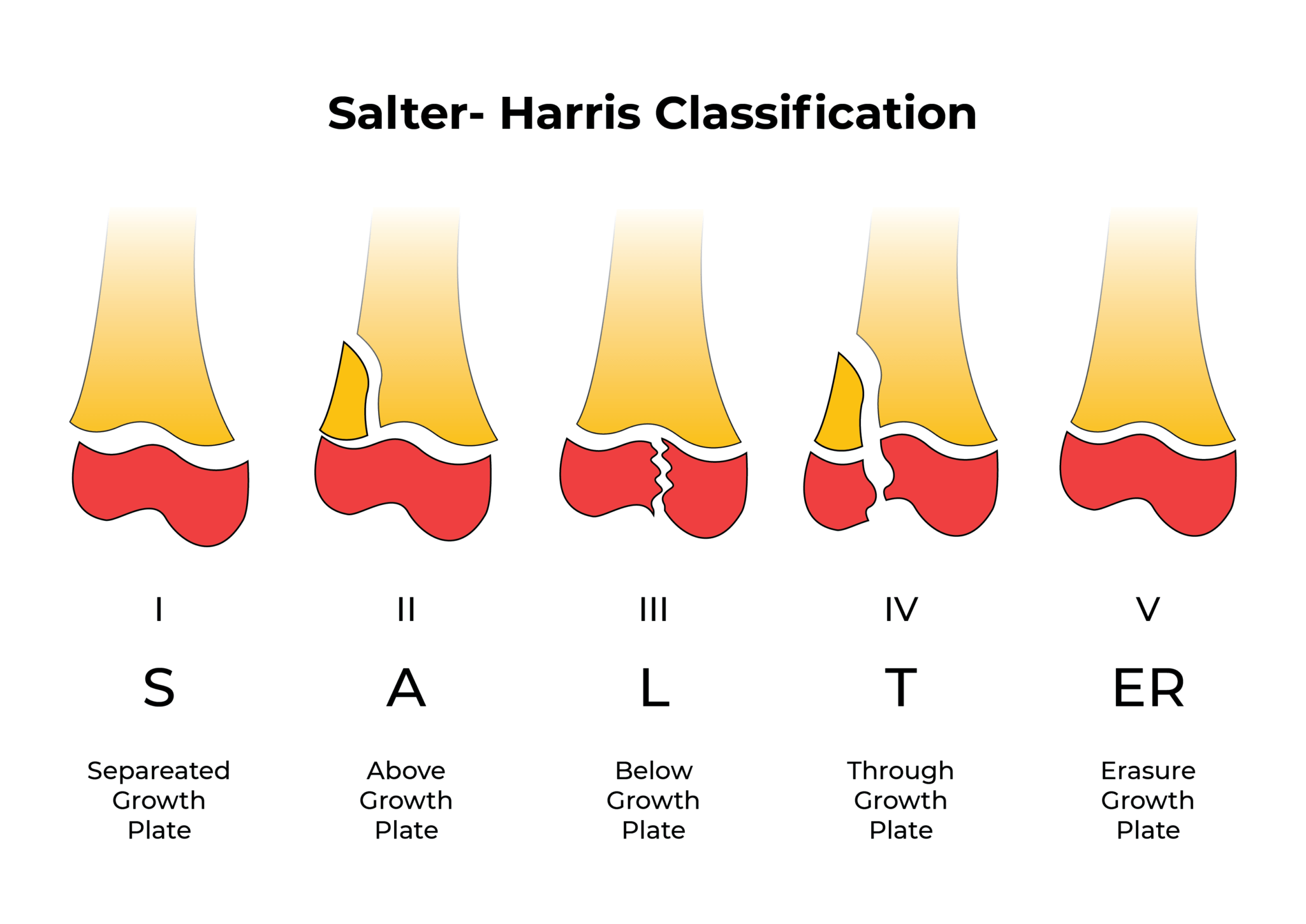
Pin on Rad
Growth plate injuries: Salter-Harris classification. Physeal fractures of the distal radius and ulna: long-term prognosis. Salter-Harris fractures (physeal fractures) refer to fractures through a growth plate (physis) and are, therefore, specifically applied to bone fractures in children.

EMNote
Salter-Harris classification of physeal disk (growth plate) fractures Types I through IV are physeal separations; the growth plate is separated from the metaphysis. Type II is the most common, and type V is the least common.

harris salter fracture classification Google Search Orthopedic Nursing, Orthopedic Surgery
Salter-Harris Classification. The most common physeal ankle fracture is the Salter-Harris Type II (SH-II), which account for 32-40% of pediatric distal tibial fractures, then followed by SH-III (25%), SH-IV (up to 25%), SH-I (3-15%) and SH-V (less than 1%). 8, 38 The prognosis of SH-I and SH-II is the best, followed by SH-III then SH-IV.

Medicowesome SalterHarris classification of fractures
Classification de Salter-Harris pour les fractures-décollement des disques ou plaques épiphysaires (cartilages de conjugaison) Les types I à IV sont des fractures épiphysaires; la plaque de croissance est séparée de la métaphyse. Le type II est le plus fréquent et le type V le moins fréquent.

Pin en Medicine
The Salter-Harris classification was proposed by Salter and Harris in 1963 1 and, at the time of writing (January 2023) remains the most widely used system for describing physeal fractures . Classification Conveniently the Salter-Harris types can be remembered by the mnemonic SALTR. type I s lipped 5-7%

SalterHarris Classification of Growth Plate Fractures UW Emergency Radiology
In a study of distal radius fractures, Cannata et al. found that the rate of physeal arrest at the distal radius was less than 30% while the rate of physeal arrest at the distal ulna approached 80%, however, neither was significantly correlated to Salter-Harris classification and fewer than 5% of patients had residual symptoms or functional.

CME 27/11/14 Paediatric Fractures Charlie's ED
Description Salter-Harris classification of fractures describes injuries involving the epiphyseal plate of any bone. Epiphyseal injuries are significant in patients who are still 'growing' and significant complications, such as disturbance of growth, are avoided by recognition of such an injury to the epiphyseal plate

SalterHarris Classification PT Master Guide
Salter-Harris Classification. Salter-Harris Classification: Focused on injuries at the pressure epiphyses [Cepela, 2016]. There are two types of epiphyses - pressure and traction Pressure type provide longitudinal growth and bear weight.; Traction type provide appositional growth at origin/insertion of muscles and do not bear weight.; Describes 5 different types (although others have also.

OurMedicalNotes SalterHarris Classification
Salter-Harris Classification. February 15th, 2021 . Bookmark . Share View Topic Outline. Overview. The Salter-Harris classification is a system for classifying fractures involving the growth plate. Such fractures have the potential of interrupting the proliferative zone, halting bone growth; higher grade fractures are at higher risk.

Salter Harris Classification Antrim ED Meducation
Injury Classification. Salter-Harris classification . Type 1: physeal separation. Type 2: fracture traverses physis and exits metaphysis. most common type. Thurston Holland fragment. Type 3: fracture traverses physis and exits epiphysis. Type 4: fracture passes through epiphysis, physis, metaphysis.

Wrist Examination & Pathology Module
The epiphyseal plate (physis or growth plate) is the weakest part of. the bone to shearing injuries. The Salter-Harris classification is a means of categorizing. epiphyseal plate fractures and provides clues to their prognosis. All such these fractures, by definition, involve or extend through the epiphyseal plate so that all such fractures.

Salter Harris Classification of Epiphyseal Injuries —
A Salter-Harris fracture is a fracture that involves the epiphyseal plate (growth plate) of a bone, specifically the zone of provisional calcification. [2] It is thus a form of child bone fracture. It is a common injury found in children, occurring in 15% of childhood long bone fractures. [3]
salter harris types ALiEM
A Salter-Harris type I fracture refers to a fracture line that runs straight across the growth plate, involving the cartilage without affecting the bone. Type I may cause the epiphysis, or the rounded end of the bone, to separate from the rest of the bone.

Salter Harris Physeal Injury Classification S GrepMed
The Salter-Harris classification system is used to grade fractures that occur in children which involve the growth plate ('physis') of a long bone (e.g. tibia or humerus). The classification is based on the involvement of the metaphysis, physis or epiphysis. Salter-Harris fractures are usually the result of a traumatic incident, like a fall.

Fractures pédiatriques physaires (des plaques de croissance) Blessures; empoisonnement
The five basic fracture types of the Salter-Harris classification are shown. A Type I fracture is a separation through the physis. A Type II fracture enters in the plane of the physis and exits through the metaphysis. The resulting metaphyseal fragment is called the Thurston-Holland fragment (*).

SalterHarris Classification SalterHarris Fractures GrepMed
The Salter-Harris classification describes fractures in children around a growth plate, or physis. This descriptive classification system often has treatment implications as well" Overview Physis, or "growth plate," is area of growing cartilage in children's bones responsible for growth throughout childhood until reaching skeletal maturity